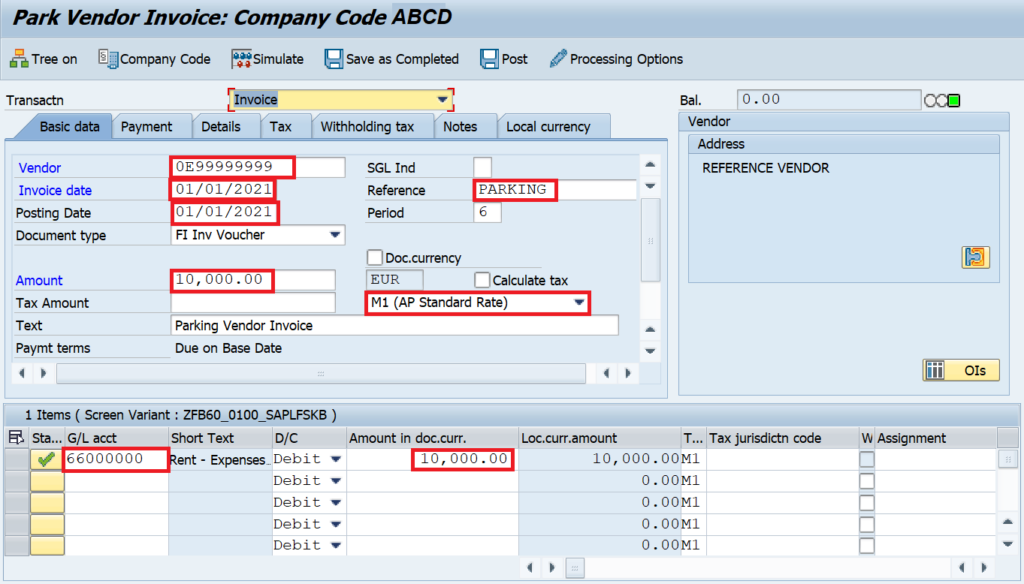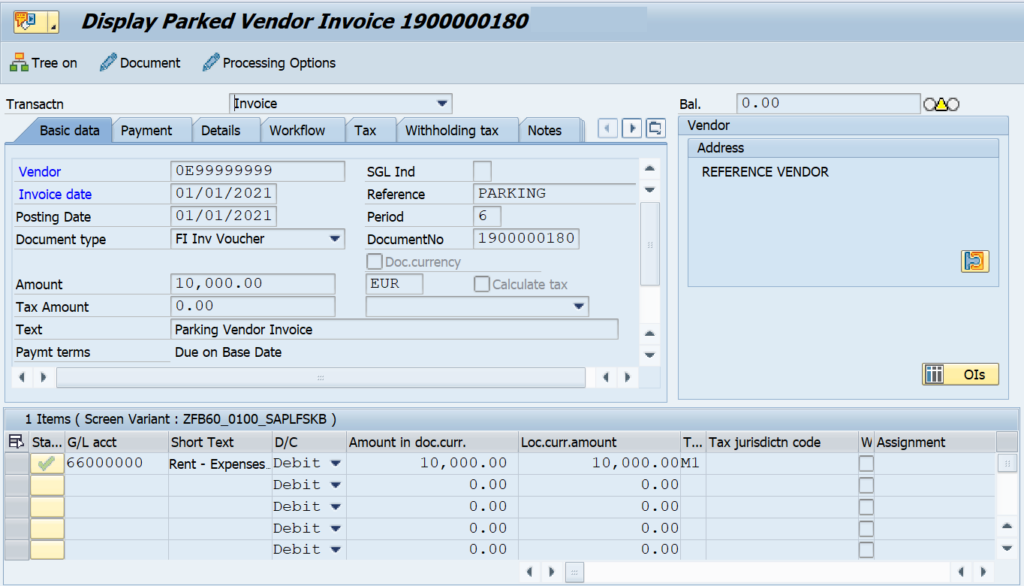FV60 in SAP: How to Park a Vendor Invoice?
Hi Everyone, I hope you had wonderful Christmas celebrations and I wish you all a very Happy New Year in advance. Today, I have come up with one more tutorial for you. And, this one is a bit different from the other tutorials. Have you ever wondered how to park a vendor invoice in SAP? If your answer is Yes, then you have come to the right place. Today, I will show you how you can park a vendor invoice using tcode FV60 in SAP.
If you remember, exactly 5 months ago, I posted a tutorial on FB60. FB60 allows you to post a vendor invoice directly. It means as soon as you prepare the data for a vendor invoice and post it in FB60, it will hit your accounting books at the same time. Once a vendor invoice is posted correctly, you can then post the vendor payments either manual or automatic. For manual vendor payments, you can go through my tutorial on F-53. Similarly, for automatic vendor payment, you can follow the tutorial on F110.
But you might have heard about the parking of invoices. In many organizations, there is a concept being followed to park an invoice before final postings to a GL or a sub-ledger account takes place. In a usual scenario, multiple business users take up the responsibility of parking and posting an invoice. For example, an accountant will park the vendor invoice by entering all the details. Then, the other person will verify the details in the parked document and then post it to the accounting books.
This is where FV60 in SAP comes into the picture. FV60 allows you to park a vendor invoice without posting it to accounting. So, let’s begin!
Table of Contents
Step 1: Execute tcode FV60 in SAP
The first step is to execute the transaction FV60 in SAP. This can be done either by entering FV60 in the command field or by following the SAP path given below:
| SAP Path | SAP Menu -> Accounting -> Financial Accounting -> Accounts Payable -> Document Entry -> Document Parking -> Park or Edit Invoice |
As soon as you execute the transaction, a pop-up will show on the screen. In this pop-up, you will have to enter the company code for which you want to park a vendor invoice. For example, I’m using the company code ABCD for this demo.

Step 2: Enter the details in the Header Data Section
The next step is to enter the header details. By default, in the Transaction drop-down menu, an ‘Invoice‘ option will be selected. This is because you have executed the FV60 tcode which is used for parking invoices only. But, here in this drop-down menu, you can also select the ‘Credit Memo’ option if you want to park a vendor credit memo. Alternatively, you can also execute the FV65 tcode to park a vendor credit memo. It’s your choice which way you prefer.
Enter the following data:
- Vendor – Input the Vendor Code for which you want to park an invoice.
- Invoice Date – Enter the date on which you want to create an invoice.
- Posting Date – Also, the date on which the posting to the sub-ledger or a GL account takes place.
- Amount – Enter the amount that you are liable to pay to the vendor.
- Currency – Also, enter the currency in which the invoice is to be raised.
- Reference – You can use this field to capture any additional details related to vendor parking.
- Text – Also, you can use this field to capture the narration of the document.
- Tax Code – This is an optional field. If tax is applicable on a vendor invoice, then you need to enter the relevant tax code as well. Otherwise, keep it blank.

Step 3: Enter the GL Details and Park the Invoice
In this step, you need to enter the GL line items. As you are aware that in SAP, an accounting document can have a maximum of 999 line items. Considering we have 1 line item for a vendor account, you can enter up to 998 GL line items in a single accounting document.
For example, I’m using the expense GL account with the Debit indicator for 10000 euros. You have an optional ‘Text‘ field to enter the narration. But, it is mandatory to enter the Cost Center for all the expense GL accounts.

After entering the GL line items, please cross-verify if the data is correct. The debit and credit amounts should match as well. At the header section, there is a ‘Balance‘ field that shows you the status of the document. If the status is green, it means you can park the invoice without any errors. But if it’s red, then it means that the balances entered by you are not matching. You need to correct the balances first before parking the document. After that, you can click on the ‘Park‘ button at the top to park the vendor invoice.
You will get a notification at the bottom of the screen that the document has been successfully parked along with the parked document number.

Step 4: Display the Parked Vendor Invoice in FBV3
This step is optional and is used to display the parked vendor invoice. Please note that a parked document cannot be displayed in FB03 because it’s not an accounting document yet. FB03 is used to display the accounting documents only.
Hence, to display a parked vendor invoice, execute the transaction FBV3. Enter the document number, company code, and Fiscal Year. Press Enter on your keyboard to display the details of the parked document.


If you think that you need to change certain details in the parked document, then you can execute the transaction FBV2 and change the details.
Thanks for reading and in the next tutorial, I will show you how you can post a parked document in SAP via FBV0. Please also go through the other tutorials. Till then, Happy Holidays 🙂



